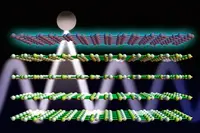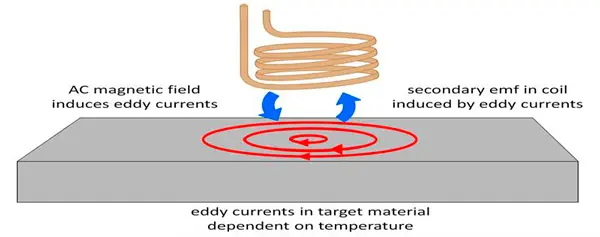Electronics News
Archive : 21 May 2015 год
 SEMTA, the sector skills council, has handed Sajid Javid, the newly appointed Secretary of State for Business, Innovation and Skills, an 8000 word document called Skills Vision. The documents calls on the Government to help in the creation of an 'industrial revolution' in schools and colleges, quality apprenticeships and industry-focused higher education. The move is needed, it says, to avert a skills crisis.
SEMTA, the sector skills council, has handed Sajid Javid, the newly appointed Secretary of State for Business, Innovation and Skills, an 8000 word document called Skills Vision. The documents calls on the Government to help in the creation of an 'industrial revolution' in schools and colleges, quality apprenticeships and industry-focused higher education. The move is needed, it says, to avert a skills crisis.
Ann Watson, the body's CEO, said: "We consulted the sector and asked what it needed to get the job done at this crucial moment in our history. Skills Vision is a blueprint for change – to galvanize the Government – to do the right thing."
According to SEMTA, examples of the skills issues employers include the fact that almost two in five firms requiring STEM skilled employees report difficulties in recruiting them.
Included in the document, which is the result of consultations with advanced manufacturing and engineering companies, is a call for a number of policies.
SEMTA wants plans that take a long term view on apprenticeships, skills and science funding, with the Government ensuring that apprenticeships are of the right quality. It also wants to see employers encouraged to engage with schools, as well as better provision for preparing students to work. Like other organisations, SEMTA also wants to see better opportunities for women, minorities and the disabled.
"Industry has spoken; its voice must be heard," Watson concluded.
Author
Graham Pitcher
Source: www.newelectronics.co.uk
 The University of Bristol says a team from its Communication Systems and Networks research group has developed a technique that can estimate and cancel out the interference from one's own transmission. This would allow a radio to transmit and receive on the same channel at the same time and therefore use only half the spectrum needed by current technology.
The University of Bristol says a team from its Communication Systems and Networks research group has developed a technique that can estimate and cancel out the interference from one's own transmission. This would allow a radio to transmit and receive on the same channel at the same time and therefore use only half the spectrum needed by current technology.
The full duplex transceiver architecture, which combines electrical balance isolation and active radio frequency cancellation, is said to suppress interference by a factor of more than 108 using low cost, small form factor technologies. The development is said to be well suited to use in mobile devices.
PhD student Leo Laughlin said: "Until now, there has been a fundamental unsolved problem with radio communication. Since the radio spectrum is a limited resource, and with network operators paying billions of pounds to access the spectrum, solving this problem would bring us one step closer to the faster, cheaper and greener devices of our connected future."
Using this approach would allow the capacity of a Wi-Fi access point to be doubled or a network operator to provide the same capacity using fewer basestations.
As well as being part of the evolution to 5G mobile, this research is also very relevant to the design of the radio circuitry in current 3G and 4G cellular mobile devices. In today's mobile devices, a separate filtering component is required for each frequency band, and because of this, today's mobiles phone do not support all of the frequency channels which are in use across the world. Different devices are manufactured for different regions of the world, and
The team also notes there are currently no 4G phones capable of unrestricted global roaming. Replacing the frequency filters in these phones with the team's duplexer circuit could create smaller and cheaper devices and allow manufacturers to produce one device that would support global 4G roaming.
Pic: Image: Sam Duckerin
Author
Graham Pitcher
Source: www.newelectronics.co.uk
 Researchers at MIT, working with colleagues from IBM's TJ Watson Research Center, Hong Kong Polytechnic University and the University of Minnesota, have coupled the properties of different two dimensional materials in a way which is said to provide an exceptional degree of control over light waves. The team says this could lead to new kinds of light detection, thermal management systems and high resolution imaging devices.
Researchers at MIT, working with colleagues from IBM's TJ Watson Research Center, Hong Kong Polytechnic University and the University of Minnesota, have coupled the properties of different two dimensional materials in a way which is said to provide an exceptional degree of control over light waves. The team says this could lead to new kinds of light detection, thermal management systems and high resolution imaging devices.
In the work, the researchers deposited a layer of graphene on top of a layer of hexagonal boron nitride (hBN). Although the two materials are structurally similar, they each interact with light differently. However, the researchers found these interactions could be complementary.
According to the team, the hybrid material blocks light when a particular voltage is applied to graphene, but allows a kind of emission and propagation – called hyperbolicity – when a different voltage is applied.
"This poses a new opportunity to send and receive light over a very confined space," said MIT associate professor of mechanical engineering Nicholas Fang, who added this could have potential application in optical interconnects.
Fang believes it should be possible to create optical waveguides of about 20nm in size, which could lead to chips that combine optical and electronic components in a single device.
Author
Graham Pitcher
Source: www.newelectronics.co.uk
 Worldwide industrial semiconductor revenues in 2014 grew to $40.4billion, 18% more than in the previous year, according to IHS. "Gradual acceleration in the global economy, led by the US and China, continued to lift industrial equipment demand," said Robbie Galoso, principal analyst, IHS Technology. "Broad based growth in industrial electronics gained momentum in the semiconductor industry, especially in products used for factory automation control, commercial avionics, LED lighting, digital internet protocol cameras, climate control, renewable energy, traction, wireless application-specific testers and oil and gas exploration equipment."
Worldwide industrial semiconductor revenues in 2014 grew to $40.4billion, 18% more than in the previous year, according to IHS. "Gradual acceleration in the global economy, led by the US and China, continued to lift industrial equipment demand," said Robbie Galoso, principal analyst, IHS Technology. "Broad based growth in industrial electronics gained momentum in the semiconductor industry, especially in products used for factory automation control, commercial avionics, LED lighting, digital internet protocol cameras, climate control, renewable energy, traction, wireless application-specific testers and oil and gas exploration equipment."
IHS expects the sector to continue its strong growth and forecasts a 7% increase in sales in 2015 and a compound annual growth rate of 6% until 2019.
Texas Instruments was the largest industrial semiconductor supplier, with sales of $3.5bn followed by STMicroelectronics and Infineon Technologies, while Micron and ON Semiconductor entered the top 10 at the expense of Maxim and Cree.
Among the top 10 semiconductor suppliers, nine achieved sales growth in 2014 – seven returning double digit growth. Only Renesas saw its revenues decline.
Author
Graham Pitcher
Source: www.newelectronics.co.uk
 Eddy currents could provide a new way to measure high temperatures in a range of challenging applications. According to The Technology Partnership, its inductive technique has already been used to measure temperature over ranges of several hundred degrees Celsius to an accuracy of 1°C.
Eddy currents could provide a new way to measure high temperatures in a range of challenging applications. According to The Technology Partnership, its inductive technique has already been used to measure temperature over ranges of several hundred degrees Celsius to an accuracy of 1°C.
While the concept of inducing eddy currents is used in other applications – including non destructive testing – TTP says it has exploited the fact that eddy currents are dependent on a material's temperature. It believes the approach could replace existing contact methods, such as thermocouples and the use of infrared.
"Inductive temperature sensing is ideal for applications where contact methods are not reliable and where lack of line of sight access, variable emissivity or high cost limit the use of infrared techniques," said Dr David Pooley, pictured, senior consultant at TTP. "Because of the simplicity of applying the technology in practical environments, it could also be used in low cost consumer applications."
Eddy currents were discovered by Foucault in 1851, but the technology was not used for industrial applications until the 1930s. "It's very exciting to take a 165 year old principle and discover a completely new range of applications for it," said Dr Pooley. "We are continuing our practical trials to refine the process and explore new applications and we are already getting a lot of interest from potential partners to commercialise the technology and take it to market."
Pic: Dr David Pooley, senior consultant, TTP

Author
Graham Pitcher
Source: www.newelectronics.co.uk

